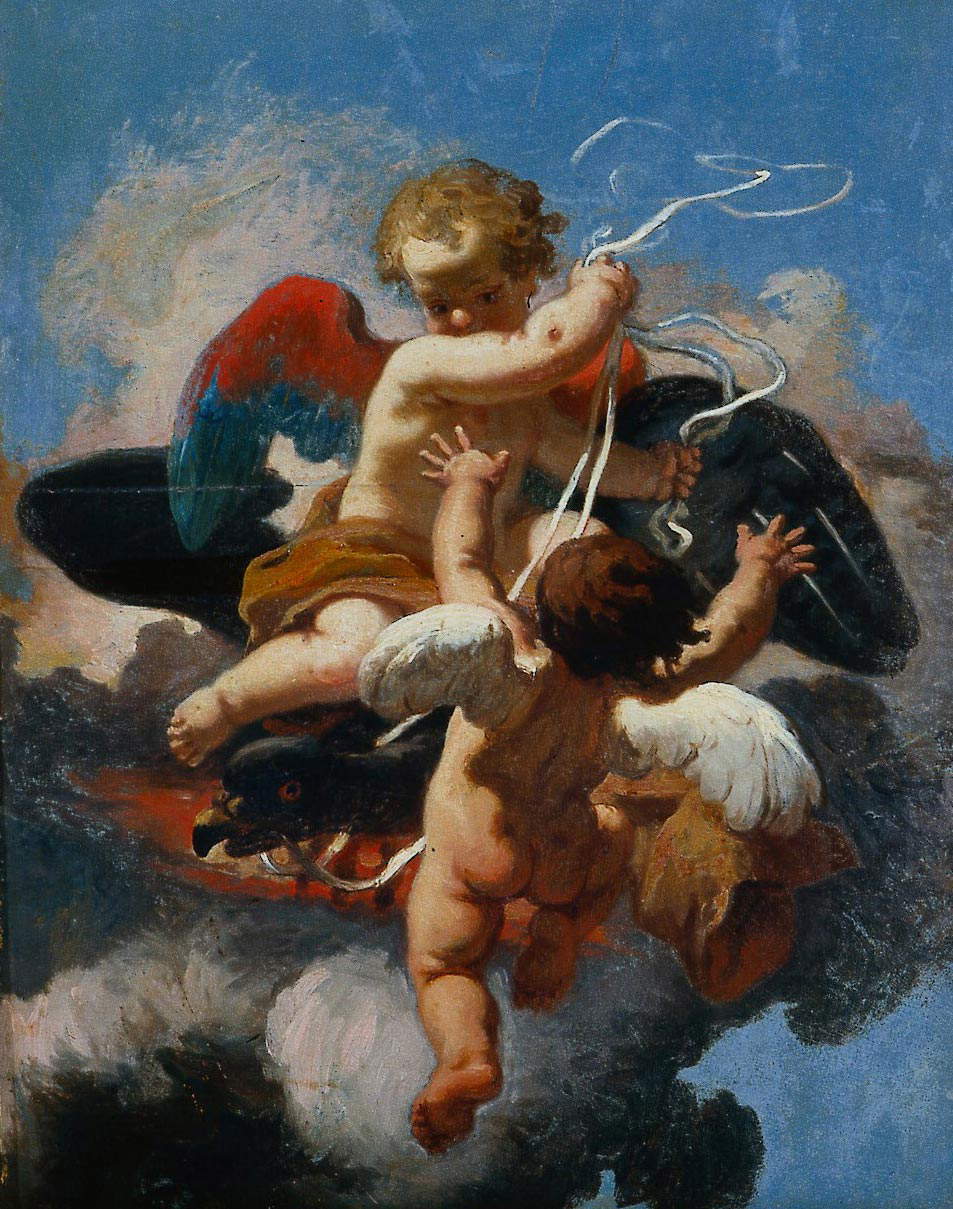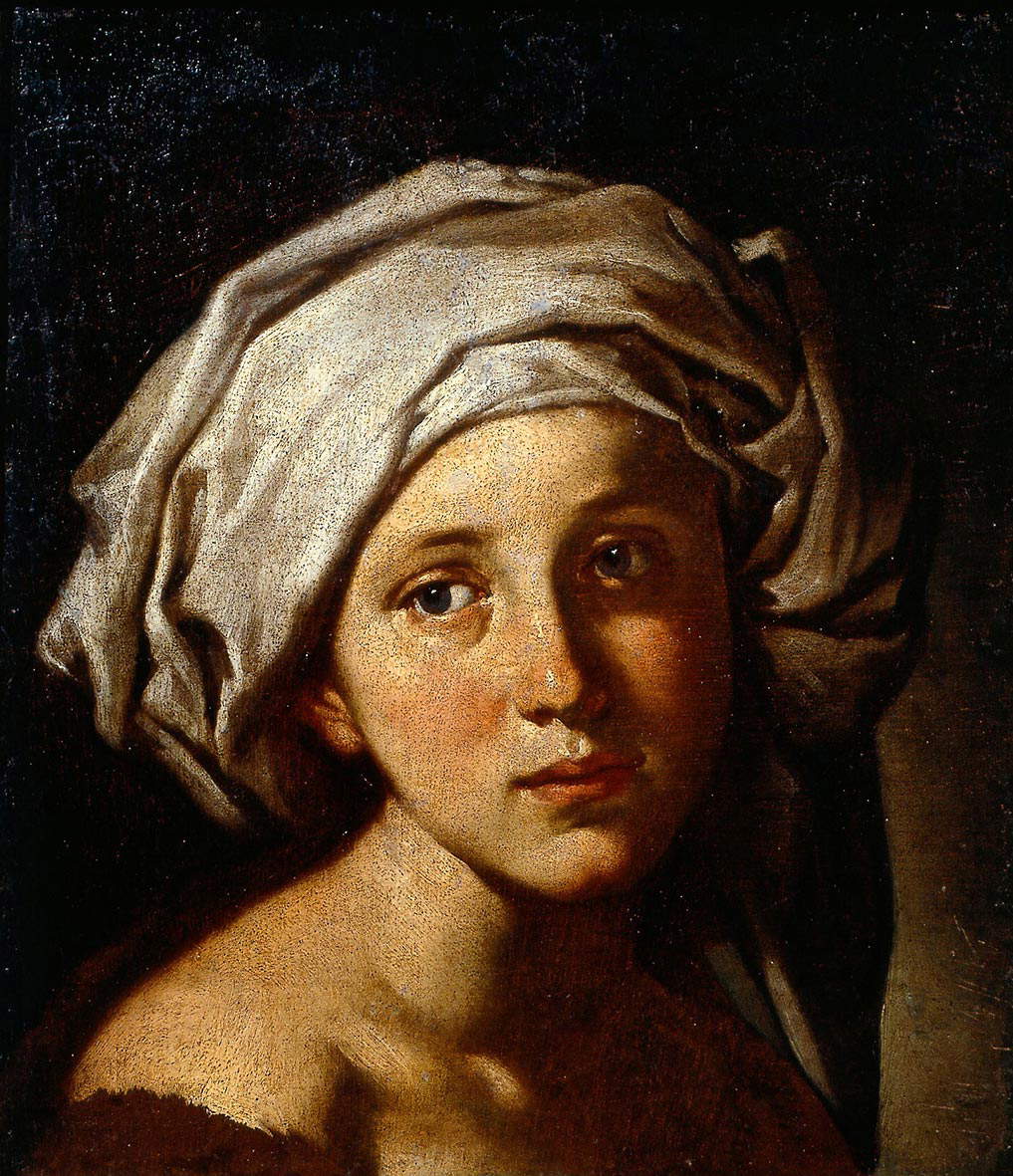From May 7 to August 22, 2021, The Gallery - Collection and Historical Archives of BPER Banca in Modena will host the exhibition Correspondences Baroque, which explores some important themes of seventeenth-century Emilian painting, particularly Baroque painting, as part of a collaboration between BPER Banca and the Civic Museum of Modena. Curated by Lucia Peruzzi, art historian and consultant to BPER Banca, lesposition integrates the heritage of the bank’s collection with that of the Museo Civico and, in particular, with ten works from the Campori and Sernicoli collections, which are temporarily inaccessible to the public due to renovation work on the premises.
The unaccessibility of the rooms, therefore, offers an opportunity for study, in search of the Baroque Correspondences between the works of Lucio Massari (Bologna, 1539 - 1633), Alessandro Tiarini (Bologna, 1577 - 1668), Giovanni Francesco Barbieri known as Guercino (Cento, 1591 - Bologna, 1666), Ludovico Lana (Codigoro, 1597 - Modena, 1646), Jean Boulanger (Troyes, 1608 - Modena, 1660), Michele Desubleo (Maubege, 1602 - Parma, 1676), Luca Ferrari (Reggio Emilia, 1605 - Padua, 1654) and Francesco Stringa (Modena, 1635-1709) present in the collections of BPER Banca and the Museum. There will then be an opportunity to delve into the figures of Giuseppe Campori (Modena, 1821 - 1887) and Matteo Campori (Modena, 1857 - 1933) to whom, in modern times, was added that of Carlo Sernicoli (Modena, 1938 - 2007): “with their charitable gesture toward the Museum,” explains Francesca Piccinini, director of the Civic Museum of Modena, “they made a fundamental contribution to the growth of the civic collections, which can thus be considered representative of three significant cultural moments in the span of a century.”
“The Gallery,” says Sabrina Bianchi, head of La Galleria - Collection and Historical Archives, “is a privileged opportunity that allows us to give voice to the mission of the BPER Banca brand and the desire to be in connection with the culture of the territories. With the enhancement of our artistic and archival heritage, we can make known the values that have always been the foundation of our company.”
The exhibition is part of a larger project to enhance the cultural heritage of BPER Bank. For the month of May, the exhibition will be open on Fridays, Saturdays and Sundays with hours of 10 a.m.-1 p.m. and 2-6 p.m. In compliance with current regulations, to access the exhibition spaces on Saturday and Sunday, it will be necessary to book your visit by 4 p.m. on Friday (T. +39 059 2021598, lagalleria@bper.it). Subsequent openings will be announced at www.lagalleriabper.it. Free admission. Personal protective equipment is required. Catalog with texts by Lucia Peruzzi and Francesca Piccinini available on site. For information: T. +39 059 2021598, lagalleria@bper.it, www.lagalleriabper.it, www.instagram.com/lagalleriabper/.
 |
| Alessandro Tiarini, Rinaldo and Armida (oil on canvas, 120 x 150 cm; Modena, BPER Banca Collection) |
Comparing the museum’s collections with those of the bank, explains curator Lucia Peruzzi, allows for a full understanding of the evolution of the language of the artists active in Modena in the seventeenth century, as well as tracing the fabric of the history of collecting in Modena. Giuseppe Campori had directed his tastes toward Emilian art of the seventeenth and eighteenth centuries, sticking to the taste of collecting linked to the Este court, and his nephew Matteo would do the same, devoting himself to the creation of a new family collection. The Sernicoli collection and that of BPER Banca, on the other hand, Lucia Peruzzi explains, represent the vitality of the new collecting that has emerged powerfully in the last quarter of the last century, including that, fundamental, of banking institutions. The orientations of these more recent choices have certainly been influenced, starting in the 1950s, by the art historical studies of connoisseurs such as Roberto Longhi, Francesco Arcangeli, Carlo Volpe and Renato Roli, and by the great biennials in Bologna that promoted knowledge and appreciation of Emilian painting of the seventeenth and eighteenth centuries. At the same time, the exhibitions held in Modena, in 1986 LArte degli Estensi and in 1998 Sovereign Passions and Tesori Ritrovati, have inevitably privileged in the Este city the ducal and aristocratic aspect of a collecting that has become increasingly aware."
The nucleus of the seventeenth and eighteenth centuries is the richest in terms of both the BPER Banca collection and the home museum of Carlo Sernicoli: “the same,” writes Lucia Peruzzi in the exhibition catalog, “that had constituted the connective tissue of both the Este artistic patrimony of an ecclesiastical nature and the collecting of the court and the circles gravitating around it in the centuries when Modena had been the capital of the duchy. If in the seventeenth century the nobility had transformed old palaces or even built new ones, furnishing them with great splendor and works of art, in the second half of the eighteenth century, in conjunction with the building renovation desired by Francis III, private individuals ’rearranged and furnished their residences having the reigning family as a model; in fact, at the top of the social scale, artistic patronage and collecting are status symbols that cooperate to enhance the charm and prestige of residences. Families of ancient nobility and wealth availed themselves of furnishings and paintings handed down from ancestors, as well as making new fashionable purchases; those of more recent nobility furnished ex novo with a careful eye on the choices of the dEste’ house.”
A comparison of the collections thus reveals an iter that reknits the load-bearing events of Baroque art in Emilia, keeping in mind in particular an area that stretches between Modena and Reggio to expand to Bologna: a history that has its beginning in the adherence to the naturalism of the Carraccis to arrive at the classicism of Reno and the exhibitions of Baroque melodrama. Carracci painting is represented by Lucio Massari and Alessandro Tiarini: in particular, it is Tiarini who, after his work for the basilica of the Ghiara arrives at a more mature language filled with sentimental accents. His work Rinaldo e Armida is thus capable of conveying the naturalistic propensities with which the artist approached the Tesseresque subject, enriched by a more sensual reinterpretation in an already Baroque style, and the Decollazione del Battista by the same artist, whose luminous direction enhances the lingenuousness and languor of the figure of Salome, conveys all the moral meanings underlying it. In the 1710s, however, the strict Carreaccesque observance began to lose ground to Rhenish instances, and this was mainly thanks to Guercino: in the exhibition, the canvases by the artist from Cento testify to his path from naturalism toward classicism, and this is mainly thanks to a youthful Apollo and Marsyas (from Banca BPER) and a Virgin Assumption from Sernicoli, which testify respectively to the naturalism of his beginnings and the classicism of his maturity.
Works by Ludovico Lana and Jean Boulanger represent the high quality of art associated with the tastes of the Este court before the turn of the century. With Erminia and Tancredi, Lana authored a careful direction of gestures and lighting effects that accompanies a narrative rendered in terms of romantic sentimental adherence. Lana, in particular, allows Modena to arrive, Lucia Peruzzi explains, “at a true linguistic structure, as complex and cultured in stylistic emulsion as it is ’loving’ in pathetic inflection, capable of coping with the new pretensions of a capital city, of which the painter himself deludes himself for some time that he can become the official referent. A dream this was destined to be interrupted, even before the pre-mature demise, following the call to court of a brilliant Lorraine painter, Jean Boulanger.” Boulanger, with his canvases Two putti playing with an eagle and Clio, muse of history lets limpronta estrosamente manierista of dorigine culture elaborated through the classical elegance of Guido Reni. These characters will make him one of the most versatile and interesting personalities of the seventeenth century in Emilia, the absolute protagonist of the decoration of the Palazzo Ducale in Sassuolo.
In the St. John the Baptist by Luca Ferrari, a painter “of robust sentiments and highly personal temperament” according to the curator, Emilian naturalism and neo-Venetian chromatic richness coexist: the artist well represents the importance that, during the seventeenth century, the city of Reggio Emilia was able to carve out for itself, having become the second most important city in the Este duchy after the loss of Ferrara in 1598 (an importance well testified by the above-mentioned works in the basilica of the Ghiara in which several great Emilian artists of the time participated). Finally, we close with the most important Modenese figure of the second half of the seventeenth century, Francesco Stringa, best known for his monumental altarpieces, although recent studies have demonstrated the full versatility of this important but little-known artist. Real and ideal merge in his Head of a Maiden with Turban: in the works of his late maturity, Stringa approaches a more graceful taste, in dialogue with Bolognese classicism and the cultural and self-celebrating ambitions of the court.
 |
| Alessandro Tiarini, Rinaldo and Armida (oil on canvas, 120 x 150 cm; Modena, BPER Banca Collection) |
 |
| Giovanni Francesco Barbieri known as Guercino, Apollo and Marsyas (oil on canvas, 67 x 58.8 cm; Modena, BPER Banca Collection) |
 |
| Jean Boulanger, Two Putti Playing with an Eagle (oil on panel, 58 x 39.5 cm; Modena, Museo Civico dArte, inv. 39) |
 |
| Michele Desubleo, The Madonna of the Rose (oil on canvas, 149 x 113 cm; Modena, BPER Banca Collection) |
 |
| Luca Ferrari, Judith with the Head of Holofernes (oil on canvas, 116 x 101 cm; Modena, Museo Civico dArte, inv. Ser. 13) |
 |
| Francesco Stringa, Head of Maiden with Turban (A Sibyl) (oil on canvas, 40.9 x 35.8 cm; Modena, Museo Civico dArte, inv. 41) |
 |
| Baroque correspondences in seventeenth-century Emilian painting on display in Modena |
Warning: the translation into English of the original Italian article was created using automatic tools. We undertake to review all articles, but we do not guarantee the total absence of inaccuracies in the translation due to the program. You can find the original by clicking on the ITA button. If you find any mistake,please contact us.